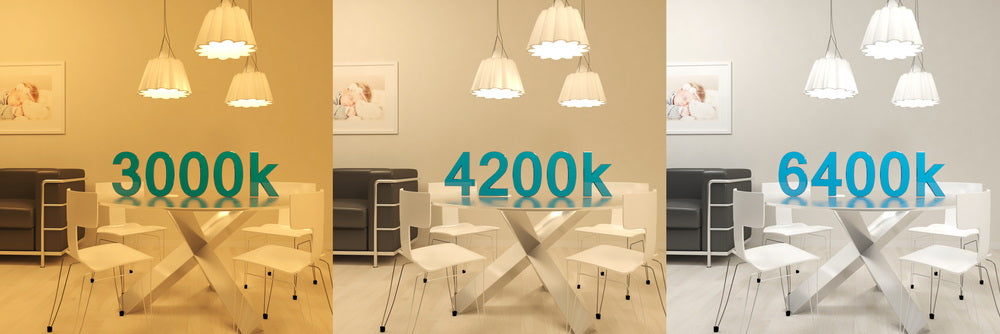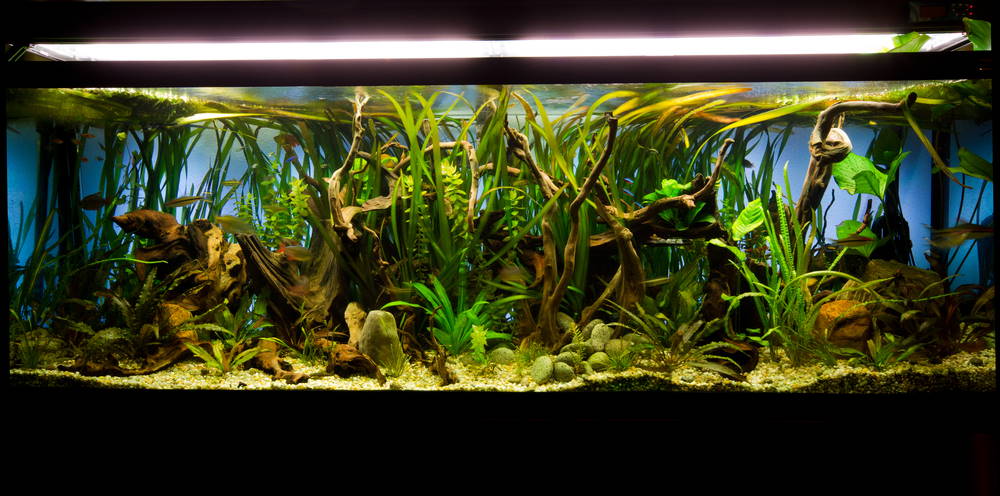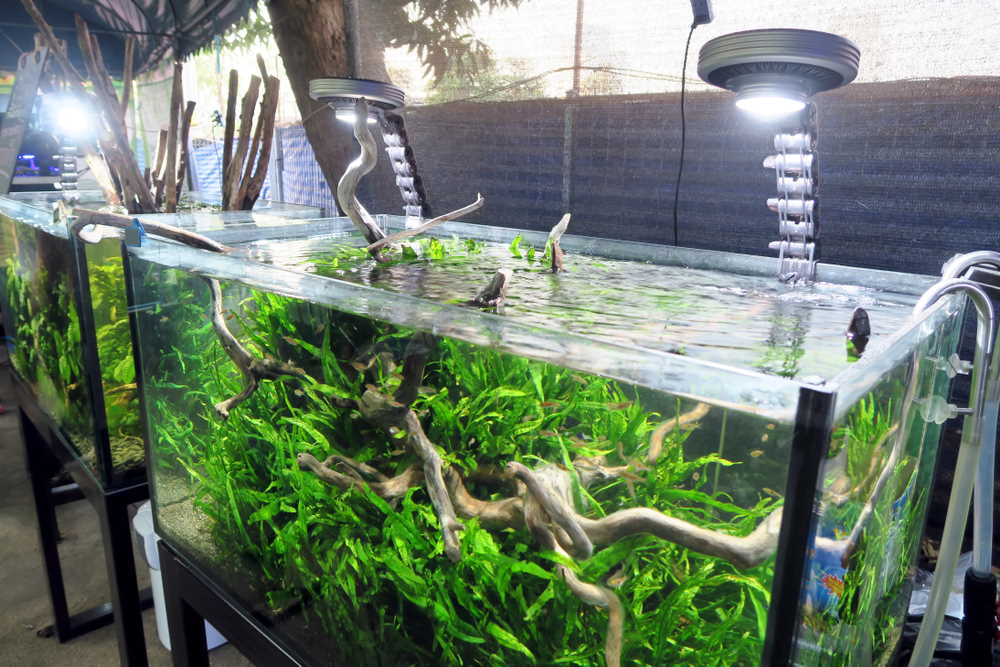How to Pick the Best Planted Aquarium Light
One of the most common questions we get asked is “What light should I get for my planted aquarium?” The short answer is that it depends. To help you get started on your planted tank journey, let’s talk about three different lighting parameters and what they mean for beginner hobbyists.
#1 Color Spectrum
If you’ve ever looked at the lighting in a cozy coffee shop versus a sterile hospital, you know that “white” lights all vary in color temperature, which is measured in units of Kelvin (K). A soft, warm reading light that gives everything a yellowish glow may have a rating of 2700K, whereas a cool white light with a bluish tint may be labeled as 10,000K.
To be honest, color spectrum doesn’t matter that much when it comes to growing aquarium plants because they can thrive under a wide range of Kelvin. It mostly comes down to human preference because we don’t want to look at aquarium lights that are too red or blue. Many hobbyists like to use a neutral white light around 5000 to 6500 K because it’s said to best simulate natural daylight. Simply speaking, you can choose a light with just about any color spectrum as long as it’s not too blue (such as those used for raising saltwater corals).

Plants can grow under a wide spectrum of lights, so pick a color temperature that you feel makes your plants and fish look the best.
#2 Light Intensity
How bright of a light should you get? First off, it depends on what kind of aquarium plants you want to grow. Low lights (or low-intensity lights) can grow anubias, cryptocoryne (or crypts), ferns, and other undemanding plants. Medium lights are good for stem plants and most other species except for demanding carpeting plants. High lights can grow virtually anything, but often require carbon dioxide (CO2) injection in order to keep up with the fast plant growth and to minimize algae blooms. Because of the complexities that come with high light planted aquariums, we recommend that most people start with growing low light plants since they’re some of the hardiest, most beginner-friendly species.
The next question is “What is considered low light versus high light?” The intensity of plant growing lights is often measured as PAR (or Photosynthetically Active Radiation). However, most manufacturers don’t publish their PAR numbers because this rating differs drastically depending on the distance from the light, height of the tank, interference from the aquarium lid, and placement of the plants. A tall tank requires a stronger light to illuminate the bottom of the tank where the plants are growing, whereas a short tank does not.
You can use almost any type or brand of light to grow plants as long as you have enough light intensity, but we highly recommend getting an LED light – rather than fluorescent, compact fluorescent (CF), or other light technology. Nowadays most planted tank lights use LEDs because they can produce high brightness with lower power consumption and they do not need to be replaced very often. Plus, some LED aquarium lights are dimmable, allowing you to control the light intensity in case you want to use them for different tanks that have different PAR requirements.

The intensity of a light varies a lot depending on where you are measuring it in the aquarium.
#3 Light Spread
The final category to consider is how far the light spreads or disperses. Most aquarium lights have a good 1-foot light spread directly below them, meaning that plants outside of that window won’t get as much light and potentially won’t grow as well. On the other hand, a shop light has a huge light spread because it’s designed to light an entire room. (Just be aware that the color spectrum on a shop light may not show off the colors on your plants and fish as well.) So, if your aquarium is 18 to 24 inches wide, you may need to buy two aquarium lights or use one cheap shop light. However, some manufacturers sell higher quality aquarium lights that boast a 120-degree light spread, which would cover more area than a generic brand light.

Depending on the size of your aquarium and the spread of your light, you may need multiple lamps to properly grow plants in all parts of the tank.
What Is the Best Aquarium Light?
Now that you know the basics of planted tank lighting, you know that the answer isn’t that simple. There are several questions you need to answer for yourself:
- What are you trying to accomplish? Are you trying to grow your first aquarium plants, propagate plants for a profit, or win an international aquascaping competition?
- What kind of plants do you want to grow, and how much light intensity or PAR do they require?
- What are the dimensions of the aquarium, and how many lights do you need to cover it?
- What is your budget, and which light will get you the most bang for your buck?

Easy Plant LED
We designed our own Aquarium Co-Op Easy Plant LED with the goals of making it easy to use for both beginners and veterans, while also being affordable and long-lasting.
- The color spectrum or temperature of the light is 5300 K to best simulate the way the natural sunlight makes fish and plants look so colorful and vibrant.
- The 3-year warranty and IP67-rated water resistance offers you peace of mind and increased longevity. Plus, our light has the ETL certification, which covers the UL listing, CSA listing, and several other North American safety standards.
- The simple, in-line remote allows you to switch between white Daylight mode and blue Moonlight mode. It also includes arrow buttons and a digital display for controlling the light brightness.
- The adjustable brightness gives you the flexibility to grow both low light and high light plants with the same product. Use the up and down arrows to select from 10 settings ranging from 10% to 100% brightness.
- The power-efficient LEDs reduce the amount of electricity the light uses. Plus, the robust housing is designed to dissipate heat quickly so the light will not get too hot.
- The extra-long, 12-foot power cable makes it possible to reach faraway wall outlets, no matter where your aquarium is in the room.
For more information, check out our LED Aquarium Lighting Guide for concrete suggestions on which lights to get based on your aquarium size.




